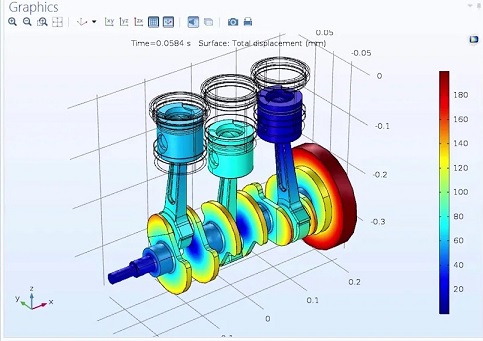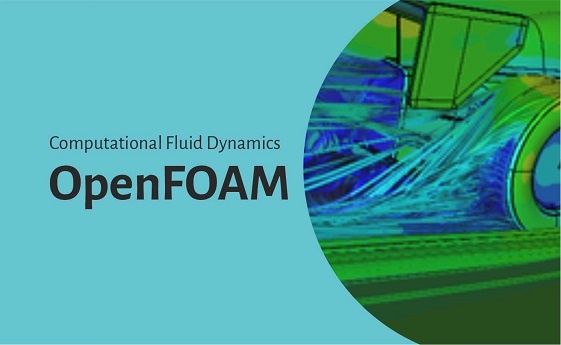Computational Fluid Dynamics (CFD) software is essential for simulating fluid flow, heat transfer, and related phenomena in engineering and scientific applications. Various CFD tools cater to different industries and use cases, offering a range of functionalities. Below are some common types of CFD software, their applications, advantages, and disadvantages.
1. General-Purpose CFD Software
These are versatile tools used across multiple industries to analyze fluid dynamics problems. They provide robust solvers and extensive customization options.
- ANSYS Fluent
- Applications: Aerospace, automotive, and energy industries for aerodynamics, combustion, and HVAC simulations.
- Advantages: Highly accurate solvers, extensive documentation, and strong support.
- Disadvantages: Expensive, steep learning curve.
- Examples of Problems Solved:
- Aircraft wing aerodynamics optimization.
- Combustion analysis in gas turbines.
- HVAC airflow simulations for office buildings.
- Car drag reduction studies.
- COMSOL Multiphysics
- Applications: Integrates CFD with other physics modules like electromagnetics and structural analysis.
- Advantages: Versatile, user-friendly GUI, strong multiphysics capabilities.
- Disadvantages: Limited in handling large-scale CFD problems, expensive.
- Examples of Problems Solved by COMSOL:
- Blood flow modeling in arteries.
- Thermal analysis of electronic components.
- Coupled fluid-structure interaction in pipelines.
- Wind turbine performance optimization.
- OpenFOAM
- Applications: Research, academia, and commercial applications requiring extensive customization.
- Advantages: Open-source, highly customizable, supports parallel computing.
- Disadvantages: Requires extensive coding knowledge, lacks user-friendly GUI.
- Star-CCM+
- Applications: Automotive, aerospace, and industrial applications.
- Advantages: Strong multiphysics capabilities, automated meshing, robust solvers.
- Disadvantages: High licensing cost, resource-intensive.
2. Industry-Specific CFD Software
Some CFD tools are tailored for specific applications, optimizing performance and usability.
- Autodesk CFD
- Applications: Electronics cooling, HVAC, and architectural applications.
- Advantages: User-friendly, integrates with CAD software.
- Disadvantages: Limited solver capabilities compared to high-end CFD software.
- Examples of Problems Solved:
- Cooling system design for data centers.
- Ventilation efficiency in large buildings.
- Electronics thermal management.
- Air circulation in industrial plants.
- Examples of Problems Solved:
- FLOW-3D
- Applications: Free surface flows, civil engineering, hydraulics, and casting processes.
- Advantages: Specializes in free surface flow problems, easy to set up.
- Disadvantages: Less versatile for general CFD problems.
- Examples of Problems Solved:
- Dam break simulations.
- Mold filling in casting processes.
- River and flood modeling.
- Water flow over hydraulic structures.
- SimScale
- Applications: Product design, HVAC analysis, and industrial applications.
- Advantages: Cloud-based, accessible from anywhere, no hardware dependency.
- Disadvantages: Limited offline functionality, dependent on internet speed.
- AVL FIRE
- Applications: Internal combustion engine simulations, emissions, and fuel efficiency analysis.
- Advantages: Optimized for engine simulations, accurate combustion modeling.
- Disadvantages: Limited general-purpose CFD capabilities.
3. High-Fidelity CFD Software
These tools offer advanced simulation techniques, such as Direct Numerical Simulation (DNS) and Large Eddy Simulation (LES), for highly accurate results.
- EXA PowerFLOW
- Applications: External aerodynamics in automotive and aerospace sectors.
- Advantages: Uses Lattice Boltzmann methods, accurate for transient simulations.
- Disadvantages: High computational cost, requires specialized expertise.
- Examples of Problems Solved:
- Wind noise reduction in vehicles.
- Aeroacoustic analysis of aircraft wings.
- External aerodynamics of racing cars.
- HVAC airflow around buildings.
- NASA FUN3D
- Applications: High-accuracy aerodynamic and aerothermal simulations in aerospace research.
- Advantages: Accurate for aerospace applications, developed by NASA.
- Disadvantages: Limited accessibility, complex to use.
- SU2
- Applications: Aerodynamic shape optimization and academic research.
- Advantages: Open-source, flexible for research and development.
- Disadvantages: Requires coding expertise, less user-friendly.
4. Cloud-Based and AI-Driven CFD Software
Emerging cloud and AI-powered CFD solutions offer scalability, accessibility, and reduced computational costs.
- OnScale
- Applications: Cloud-native simulation platform integrating multiphysics CFD with AI-driven optimization.
- Advantages: Scalable, cost-effective, AI-driven.
- Disadvantages: Requires internet access, dependent on cloud resources.
- Examples of Problems Solved:
- AI-driven optimization of microfluidic devices.
- Battery cooling simulations for electric vehicles.
- High-frequency wave propagation in electronics.
- AI-assisted design of HVAC systems.
- Siemens Simcenter STAR-CCM+ Cloud
- Applications: High-performance computing (HPC) access for large-scale simulations.
- Advantages: Reduces hardware requirements, efficient cloud-based computing.
- Disadvantages: Subscription-based pricing, latency issues in large-scale cases.
- Azure Fluid Flow Simulation
- Applications: AI and cloud computing to streamline CFD analysis.
- Advantages: AI-enhanced accuracy, cloud scalability.
- Disadvantages: Limited customization options, data security concerns.
Applications of CFD Software
CFD software is applied in numerous fields, enabling engineers and scientists to optimize designs, predict performance, and enhance efficiency.
- Aerospace & Aviation: Aerodynamic optimization, drag reduction, and thermal management.
- Automotive: Vehicle aerodynamics, cooling systems, and combustion engine efficiency.
- Energy & Power Generation: Wind turbine performance, gas turbine combustion, and nuclear reactor cooling.
- Biomedical Engineering: Blood flow modeling, respiratory airflow studies, and medical device design.
- HVAC & Architecture: Indoor air quality, ventilation efficiency, and thermal comfort analysis.
- Manufacturing & Process Engineering: Mixing, chemical reactions, and material flow in production lines.
Conclusion
The choice of CFD software depends on the complexity of the problem, required accuracy, industry requirements, and computational resources available. As CFD technology evolves, cloud computing and AI-driven solutions are making simulations more accessible and efficient, driving innovation across multiple domains.




